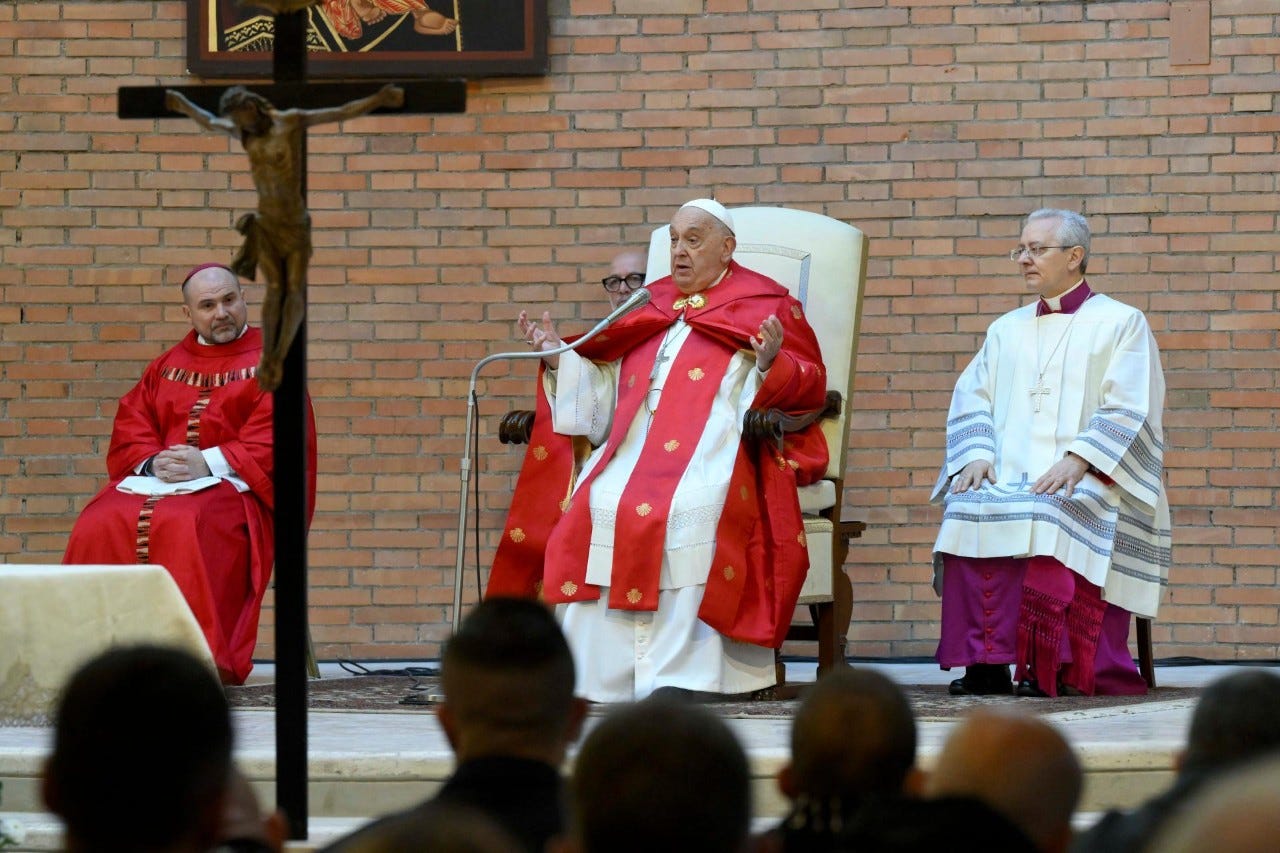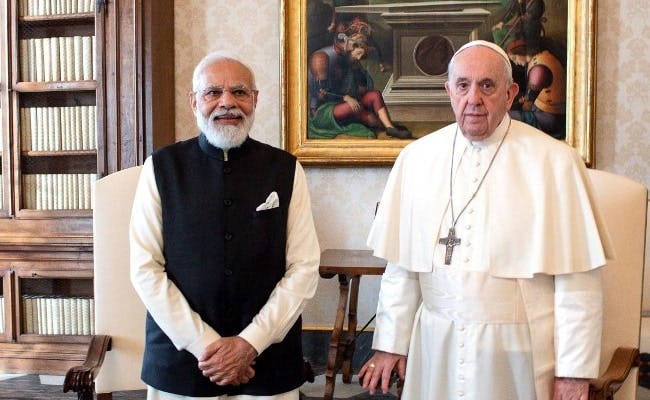Pope Francis Seriously Unwell: We wish him a complete and speedy recovery
As he faces this most critical of health challenges, the entire global community, especially the faithful, stands united in hope and prayer.
Pope Francis Seriously Unwell
Pope Francis, born Jorge Mario Bergoglio, has been the guiding light for millions as the leader of the Catholic Church since his election in 2013. Now, at 88 years old, his health has once again become a focal point of global attention. Recently hospitalized for a severe respiratory ailment, his condition has raised concerns while also prompting reflections on a life marked by resilience, deep spirituality, and transformative leadership. This piece explores his current medical crisis alongside a detailed sketch of his life, highlighting both his enduring vulnerabilities and his extraordinary journey.
Current Respiratory Ailment and Medical Condition
Diagnosis and Hospitalization
On February 14, 2025, Pope Francis was admitted to Rome’s Gemelli Hospital after a rapidly worsening respiratory infection initially thought to be bronchitis. Further tests revealed a polymicrobial respiratory tract infection—a complex interplay of bacteria, viruses, and fungi—that evolved into bilateral pneumonia, affecting both lungs severely. By February 18, imaging studies confirmed significant lung inflammation and scarring, leading to the initiation of aggressive antibiotic and corticosteroid therapy.
On February 22, the Vatican disclosed that the pontiff had experienced a prolonged asthmatic respiratory crisis, necessitating high-flow oxygen and blood transfusions to address complications from anemia. Although he has remained mentally alert and even managed to sit for parts of the day, his overall condition is still considered “reserved”, with sepsis—an overwhelming systemic infection—posing a constant threat.
Risk Factors and Latest Medical Updates
Several longstanding factors contribute to his current vulnerability:
Chronic Lung Disease: At 21, Bergoglio survived a near-fatal pneumonia that required surgical removal of part of his right lung. This early setback left him with a permanently diminished respiratory capacity.
Advanced Age: At 88, his immune defenses are naturally less robust, making recovery slower and more challenging.
Recurrent Respiratory Illnesses: A history of bronchitis, pleurisy, and a March 2023 hospitalization underscore the fragility of his pulmonary health.
Asthmatic Bronchitis: His chronic asthma predisposes him to recurring respiratory crises, as evidenced by the severe episode on February 22.
As of February 23, 2025, his treatment continues with:
High-flow oxygen therapy to maintain proper blood oxygenation.
Blood transfusions to counteract anemia.
Targeted antimicrobial therapies to combat the diverse pathogens attacking his lungs.
The dedicated medical team, headed by Dr. Luigi Carbone and Dr. Sergio Alfieri, remains vigilant, with the looming risk of sepsis prompting constant monitoring and cautious intervention.
Life History and Ecclesiastical Career
Early Life and Baptism
Jorge Mario Bergoglio was born on December 17, 1936, in Buenos Aires, Argentina, to Italian immigrant parents, Mario José Bergoglio and Regina María Sívori. Baptized shortly after his birth, he imbibed the profound symbolism of baptism early on—a ritual he later urged believers to celebrate as a “rebirth” into the Christian community. This early foundation set the stage for a life dedicated to spiritual service and social justice.
Health Struggles and the Call to Jesuit Vocation
At just 21, Bergoglio’s life was irrevocably changed when a severe bout of pneumonia led to the surgical removal of the upper lobe of his right lung. This critical health challenge not only left him with lasting respiratory limitations but also deepened his spiritual resolve. During his long recovery, he experienced what he later described as a divine calling, leading him to enter the Jesuit novitiate in 1958. His academic journey in philosophy and theology—studied in both Argentina and Germany—culminated in his ordination as a priest in 1969, laying the groundwork for his future contributions to the Church.
Leadership in the Argentine Church
Bergoglio's rise within the Church was swift and marked by profound challenges. From 1973 to 1979, he served as the Provincial Superior of Argentina during the turbulent period of the “Dirty War.” Although his actions during this era were later scrutinized, he maintained that his primary focus was on offering spiritual and humanitarian support amid national strife. In 1998, he was appointed Archbishop of Buenos Aires, and by 2001, he was elevated to cardinal—a role in which he boldly championed social justice, denouncing economic inequality and advocating for the marginalized.
Papacy and Global Influence
Elected on March 13, 2013, Pope Francis broke new ground as the first Jesuit and the first pope from the Americas. His tenure has been characterized by transformative initiatives:
Environmental Advocacy: His 2015 encyclical Laudato si’ was a clarion call for global action against climate change.
Interfaith Dialogue: Historic meetings with leaders from various faiths, including Grand Ayatollah Ali al-Sistani, have strengthened inter-religious relations.
Church Reforms: His efforts to decentralize Vatican authority and address clerical abuse scandals have reshaped the inner workings of the Church, reflecting his commitment to transparency and accountability.
Health Challenges During His Papacy
Throughout his papacy, Pope Francis has navigated multiple health setbacks:
2021: Underwent colon surgery with a subsequent nine-day hospitalization.
March 2023: A severe bout of bronchitis led to a three-night hospital stay.
2025: The current episode of bilateral pneumonia marks his most critical health crisis yet, coinciding with disruptions in the observances planned for the 2025 Holy Year.
Despite these recurrent challenges, the pontiff has shown remarkable fortitude by delegating public appearances and speeches while continuing to fulfill his duties as the spiritual leader of millions.
Prognosis and Implications for the Church
Pope Francis’s condition is a stark reminder of the intersection between personal vulnerability and global responsibility. While the Vatican assures that he remains mentally clear and engaged, the risks associated with sepsis and other complications necessitate a careful and measured approach. With no explicit canon law guiding the procedures for an incapacitated pope—and given the precedent of Benedict XVI’s resignation in 2013—the Church faces significant uncertainties regarding future leadership and continuity of papal functions.
Summing Up
Pope Francis’s current medical crisis—a convergence of bilateral pneumonia, a polymicrobial infection, and longstanding respiratory vulnerabilities—casts a long shadow over his storied life. From his humble beginnings in Buenos Aires and his early baptism that set him on a spiritual path, through life-altering health challenges and a profound calling to the Jesuit order, his journey has been one of relentless service and personal sacrifice. His tenure as pope has been transformative, marked by a commitment to social justice, interfaith dialogue, and environmental stewardship.
As he faces this most critical of health challenges, the entire global community, especially his supporters and followers, stands united in hope and prayer. We wish him a complete and speedy recovery, confident that his legacy of compassion and resilience will continue to inspire for generations to come.
Looking Ahead: Prospects for an India Visit
Pope Francis has already accepted Prime Minister Modi's invitation to visit India, with the journey expected to take place after 2025, following the celebrations of the Church's "Jubilee Year" in Rome. This visit promises to be a historic moment, especially since the last papal visit to India was made by Pope John Paul II in 1999. With around 20.4 million Catholics in India—approximately 1.4 percent of a population of 1.43 billion—a new visit by Pope Francis would be a powerful gesture of outreach and engagement with the country’s vibrant Catholic community. This community is remarkably diverse, comprising both Roman Catholics and Eastern Catholics of the Syro-Malabar and Syro-Malankara rites, with large concentrations in southern states like Kerala and Tamil Nadu. Meanwhile, millions across India are joining in prayer for his swift recovery, hoping that he will soon be able to set foot on Indian soil during his papacy.






